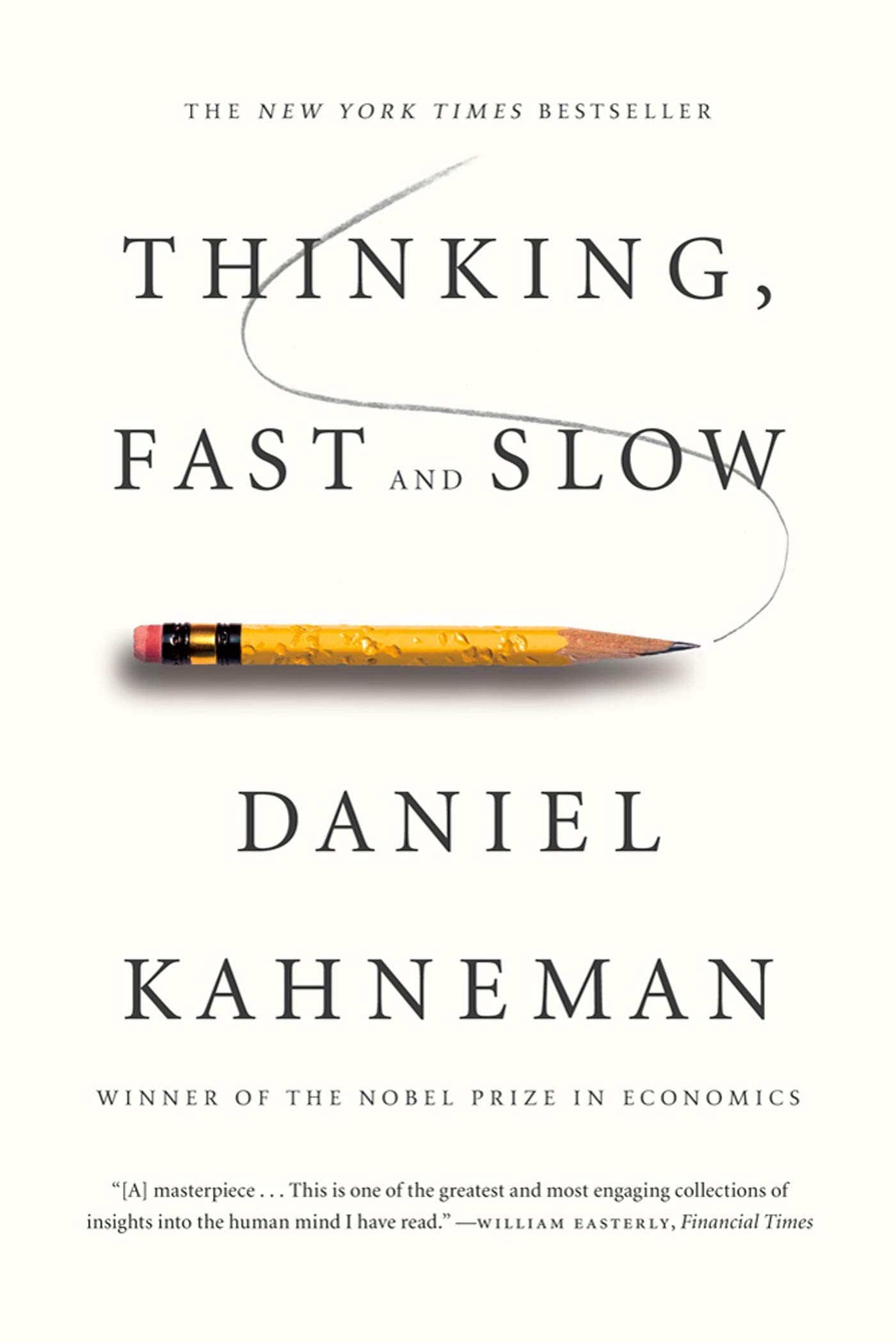 Thinking, Fast and Slow by Daniel Kahneman
Thinking, Fast and Slow by Daniel KahnemanMy rating: 5 of 5 stars
During my Master’s in Risk Analysis, Daniel Kahneman’s “Thinking, Fast and Slow” was on the recommended reading list. I was surprised, as it is more of a ‘popular’ book than a textbook. But I was also pleased that it was on there. It had been on my reading list for quite some time, and now I finally had a good reason to read it.
View all my reviews
Making Complex Science Digestible
What strikes me most about the book is how Kahneman transforms complex concepts into engaging narratives. Through personal stories and clear examples, he guides you through the workings of the mind without losing you in academic jargon.
One of the anecdotes that stuck with me was the story in which Kahneman described how fighter pilot trainers firmly believed that harsh criticism after poor performance leads to improvement, while praise after a good performance leads to deterioration. Through a simple experiment involving coin tosses in a circle, he demonstrated that this was just a regression to the mean: Performance naturally varies around an average, regardless of the feedback given.
System 1 vs System 2: Beyond the Basics
The book’s core concept—the distinction between fast, intuitive thinking (System 1) and slower, analytical thinking (System 2)—has large implications for risk assessment. We often rely on quick, gut-level judgments when evaluating risks, but these intuitive assessments can be deeply flawed.
For example, Kahneman explains how our System 1 thinking makes us:
- Overconfident in our predictions
- Too quick to conclude limited data
- Prone to seeing causal relationships in random events
- Biased by how information is framed
The Risk Management Connection
As someone working in risk management, I found the book’s insights about probability assessment and risk perception hit close to home. Kahneman shows us how our minds often play tricks on us when evaluating risks:
Take the classic example from the book, where people judge the probability of dying from different causes. We consistently overestimate dramatic but rare risks (like aeroplane crashes) while underestimating common but less sensational risks (like diabetes).
Practical Applications in Risk Management
Reading this book helped me understand why we often make poor risk decisions. When we assess risks, we’re not just dealing with numbers and probabilities – we’re dealing with human psychology.
Some key insights I’ve applied in my work:
- Why we need to be especially careful with intuitive risk judgments and the importance of structured assessment tools to counter our natural biases
- How to better communicate risk information to account for psychological biases
- The value of challenging our immediate reactions to risk scenarios
Final Thoughts
The beauty of Kahneman’s work is that it makes complex concepts accessible without oversimplifying them. Through personal stories, clear examples, and engaging writing, he helps us understand our thinking processes and their limitations.
I particularly recommend the audiobook. Most of it is available for free on YouTube, and the whole book is available on Spotify, Audible, and others in multiple languages.


Leave a Reply